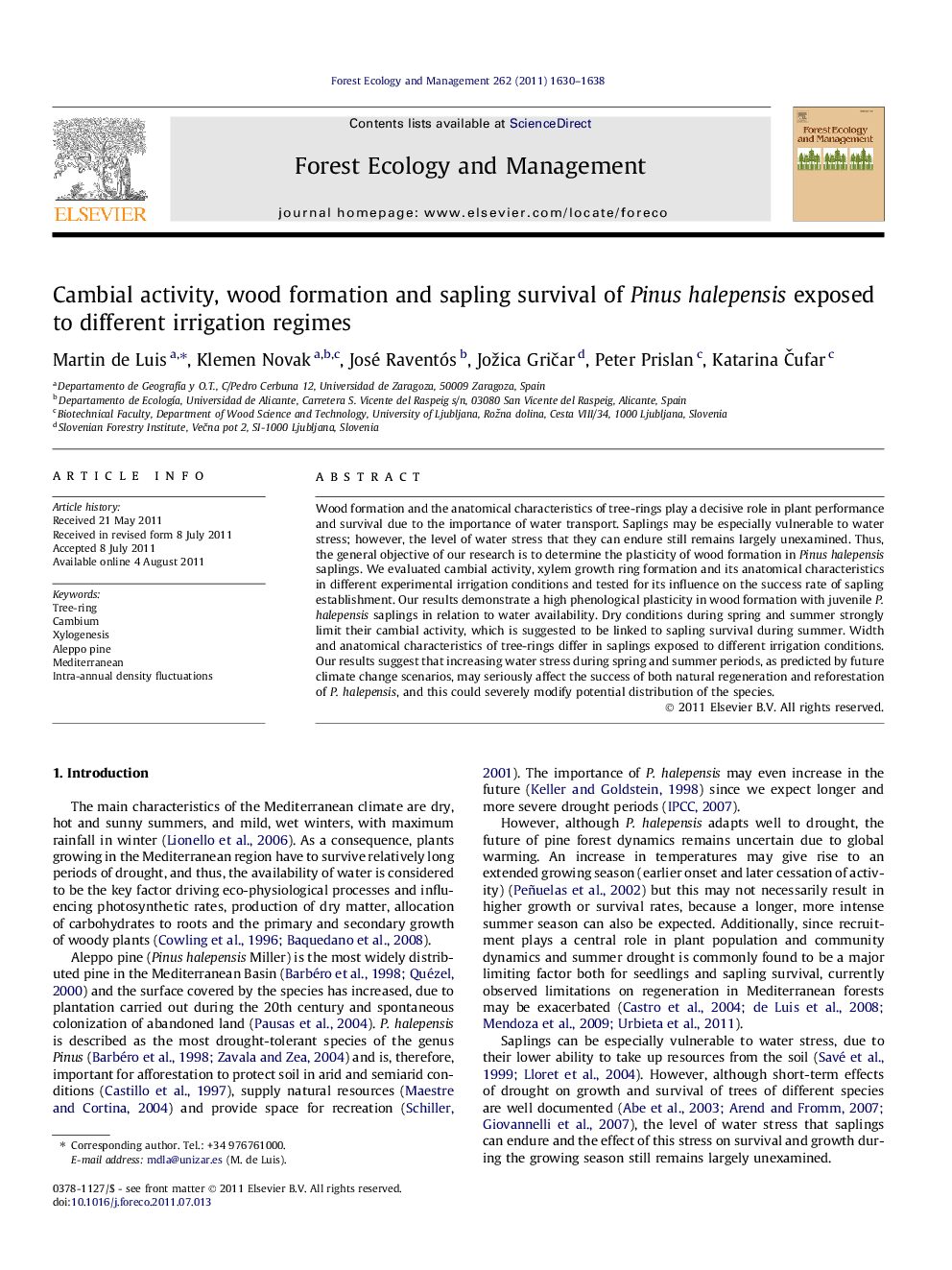| Article ID | Journal | Published Year | Pages | File Type |
|---|---|---|---|---|
| 87692 | Forest Ecology and Management | 2011 | 9 Pages |
Wood formation and the anatomical characteristics of tree-rings play a decisive role in plant performance and survival due to the importance of water transport. Saplings may be especially vulnerable to water stress; however, the level of water stress that they can endure still remains largely unexamined. Thus, the general objective of our research is to determine the plasticity of wood formation in Pinus halepensis saplings. We evaluated cambial activity, xylem growth ring formation and its anatomical characteristics in different experimental irrigation conditions and tested for its influence on the success rate of sapling establishment. Our results demonstrate a high phenological plasticity in wood formation with juvenile P. halepensis saplings in relation to water availability. Dry conditions during spring and summer strongly limit their cambial activity, which is suggested to be linked to sapling survival during summer. Width and anatomical characteristics of tree-rings differ in saplings exposed to different irrigation conditions. Our results suggest that increasing water stress during spring and summer periods, as predicted by future climate change scenarios, may seriously affect the success of both natural regeneration and reforestation of P. halepensis, and this could severely modify potential distribution of the species.
► Pinus halepensis saplings show a high phenological plasticity in wood formation. ► Such plasticity is related with water availability. ► Wood formation showed a bimodal pattern that may extend up to 9 months. ► Dry conditions during spring and summer strongly limit cambial activity. ► Lack of cambial activity, is linked to sapling survival during summer.
